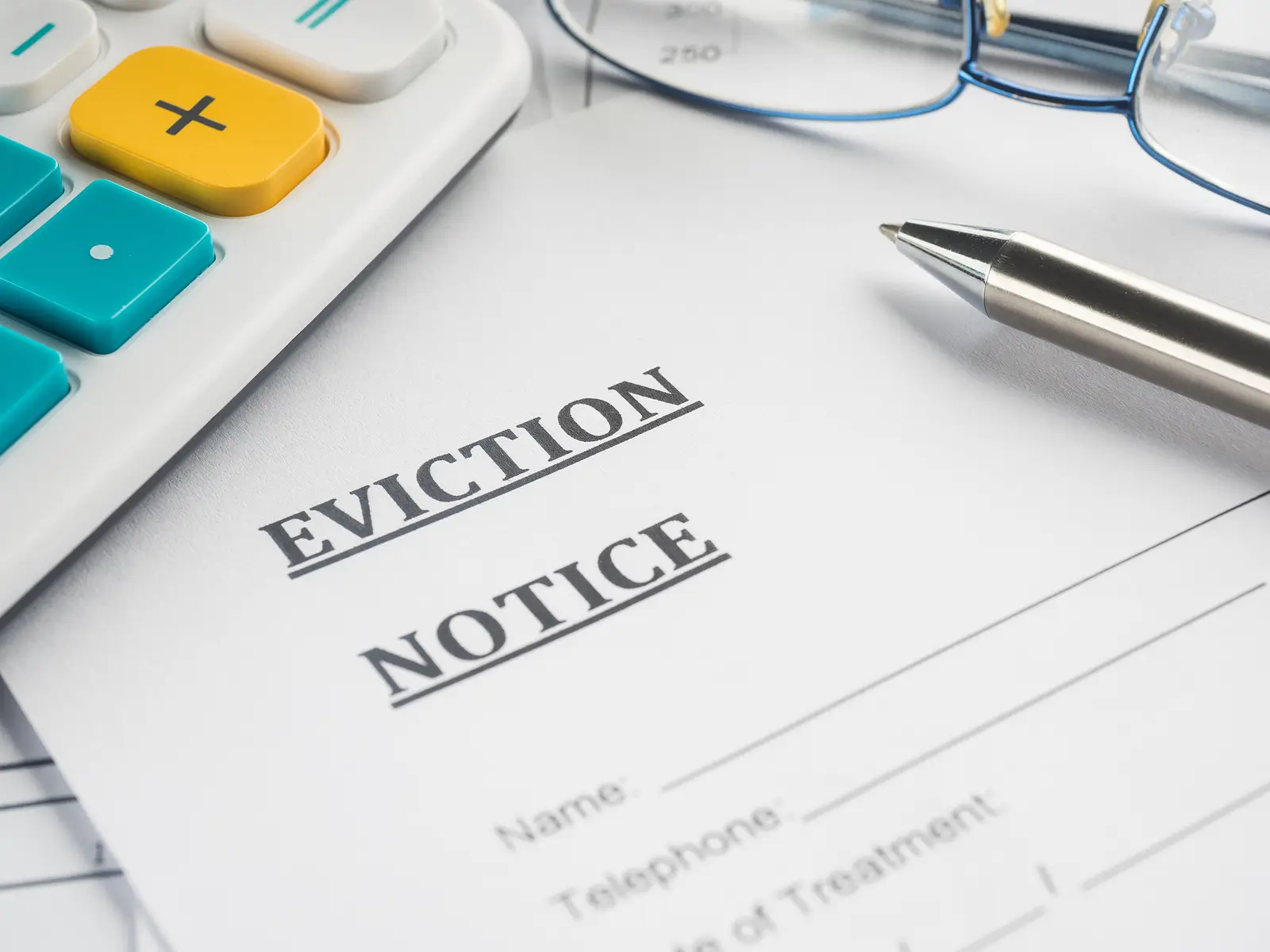Serving eviction notices isn’t just a formality; it’s a legal obligation. If you’re a landlord or property manager in California, you must understand exactly which notice to issue, when, and how to serve it properly.
In this blog, brought to you by Advantage Property Management Services, serving Pleasanton, CA and the surrounding area, we’ll walk through the most common types of eviction notices in California, the key requirements, and best practices for serving them so you stay compliant and protect your investment.
Key Takeaways
There are different notice types—3-day, 30-day, 60-day, and 90-day—depending on the situation (non-payment, lease violation, or no-fault termination).
The notice must clearly state the reason, the tenant’s name, address, amount owed (if any), and deadline. Mistakes can invalidate the process.
Serving the notice must follow California rules: personal delivery, substituted service and mail, or posting and mail. Improper service may delay or derail an eviction.
The notice is only the first step. If a tenant doesn’t comply by the deadline, you must file an unlawful detainer lawsuit to legally remove them.
Local and state tenant protection laws, such as the California Tenant Protection Act of 2019 (AB 1482), may impose additional requirements, especially for longer-term tenancies.
1. Why Issuing the Right Type of Notice Matters
Before you serve a notice, make sure you have a valid legal reason to give it. Under California law, a landlord must give a written notice before starting an eviction case (known as an “unlawful detainer”) in most cases.
If you issue the wrong type of notice or serve it improperly, you risk delaying the eviction, having your case dismissed, or even having to restart the process entirely.
2. The Most Common Types of Eviction Notices in California
a) 3-Day Notice to Pay Rent or Quit
This notice is used when a tenant fails to pay rent. You give them three days to either pay the full amount owed or move out.
When to use it:
Tenant is behind on rent.
What it must include:
Tenant’s full name(s)
Rental address
Amount owed (rent only, not late fees or utilities, unless specified in the lease)
Deadline to pay or vacate (3 days)
Instructions on how and where to pay
Key tip: Make sure you are absolutely correct on the amount owed and that you use the proper form. Errors may invalidate the notice.
b) 3-Day Notice to Perform Covenants or Quit (Cure or Quit)
This notice is used when a tenant has violated a term of the lease (other than non-payment) and has an opportunity to fix the violation within three days.
Examples include:
Excessive noise
Subletting without permission
Key: The tenant must be given a chance to cure the violation, not just move out.
c) 3-Day Notice to Quit (Unconditional)
Used in more serious cases where the tenant is not given an opportunity to fix the problem—it’s essentially a “you must move out” notice.
Situations include:
Illegal activity on the property
Repeated lease violations where a cure isn’t appropriate
Once properly served, the three-day timeline begins immediately.
d) 30-Day or 60-Day Notice to Terminate Tenancy
These notices apply when you’re ending a tenancy without fault, or simply terminating a month-to-month tenancy.
30-day notice: Typically used when the tenant has occupied the property for less than one year.
60-day notice: Used when the tenant has occupied the property for one year or longer.
Important: If the unit is covered by AB 1482 (the Just-Cause Eviction Law), you may need to state the reason for termination and comply with additional requirements.
e) 90-Day Notice
Some subsidized housing or tenants with special protections require a 90-day notice. This applies in cases involving government-subsidized programs or specific local ordinances.
3. Serving the Notice Correctly
Once you’ve determined which notice to use, you must serve it according to California law. The method of service determines when the countdown begins.
Legal service options include:
Personal delivery: Handing it directly to the tenant.
Substituted service and mail: If the tenant isn’t present, leave it with a responsible person at the residence or business and mail a copy.
Posting and mail: If personal or substituted service fails, post it in a conspicuous place at the rental unit and mail a copy. (Extra days may be added for mailing.)
Why this matters: If the service is done incorrectly, you may have to restart the process or risk having your case dismissed.
Other serving tips:
Keep proof or documentation of service (who you gave it to, when, and how).
Do not lock the tenant out, shut off utilities, or remove their belongings. Self-help evictions are illegal in California.
Make sure the notice is dated correctly and that the timeline counts the correct number of days.
4. What Happens After the Notice Period
If the tenant responds by paying rent, curing a violation, or vacating the property within the notice period—great. The process ends there.
If not, the landlord may proceed to the next step: filing an unlawful detainer action in court.
To proceed, you will need:
The correct notice, properly served
Proof of service
Lease or rental agreement
Grounds for eviction
Compliance with local and state laws (just-cause, rent control, etc.)
Once you obtain a judgment, only the sheriff may physically evict the tenant. Any attempt to remove them yourself is illegal.
5. Best Practices for Property Managers & Landlords in Pleasanton
As a property management company serving Pleasanton and the surrounding areas, Advantage Property Management Services recommends the following best practices:
Use the correct form: Many court-approved forms are available through official channels. Using an incorrect form or missing required details can invalidate your notice.
Stay informed about local ordinances and state laws: California’s tenant protection laws, including AB 1482, impose extra requirements for many rental properties.
Document everything: Keep detailed records of notices, dates, service methods, and any tenant communications.
Consult legal counsel when needed: Professional guidance can help you avoid mistakes that cost time and money.
Be fair but firm: Clear communication and adherence to the law make the process smoother for everyone involved.
Frequently Asked Questions
1. Can I give less than a 3-day notice if a tenant is very late on rent?
No. California law requires landlords to give a full three-day notice to pay or quit for non-payment of rent. Issuing a shorter notice could make your eviction invalid.
2. Does the type of lease (fixed term vs. month-to-month) change my notice requirement?
Yes. For a month-to-month tenancy, a 30-day notice is typically required if the tenant has been there less than 12 months, while a 60-day notice is required for tenancies longer than one year.
3. What if the notice I serve doesn’t include required wording under AB 1482 or local law?
If your notice lacks the required language about tenant rights or reasons for termination, you risk being out of compliance. Always double-check your notice requirements before serving it.
Navigating Evictions the Right Way in California
Evictions are among the most sensitive aspects of property management. When handled properly, the process can be straightforward and compliant with California law. For landlords and property managers in Pleasanton, CA, understanding the type of notice, proper serving method, and legal timeline is crucial to a successful outcome.
At Advantage Property Management Services, we believe in managing evictions with fairness, professionalism, and precision. If you’re unsure about which eviction notice to serve or how to properly handle the process, our experienced team can help guide you through every step to ensure it’s done legally and efficiently. Contact us today!
Disclaimer: This blog is for general informational purposes only and does not constitute legal advice. For advice specific to your situation, consult a qualified attorney.






